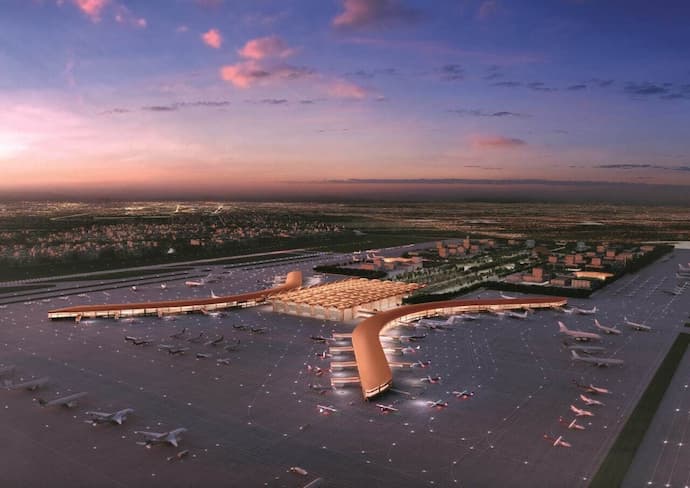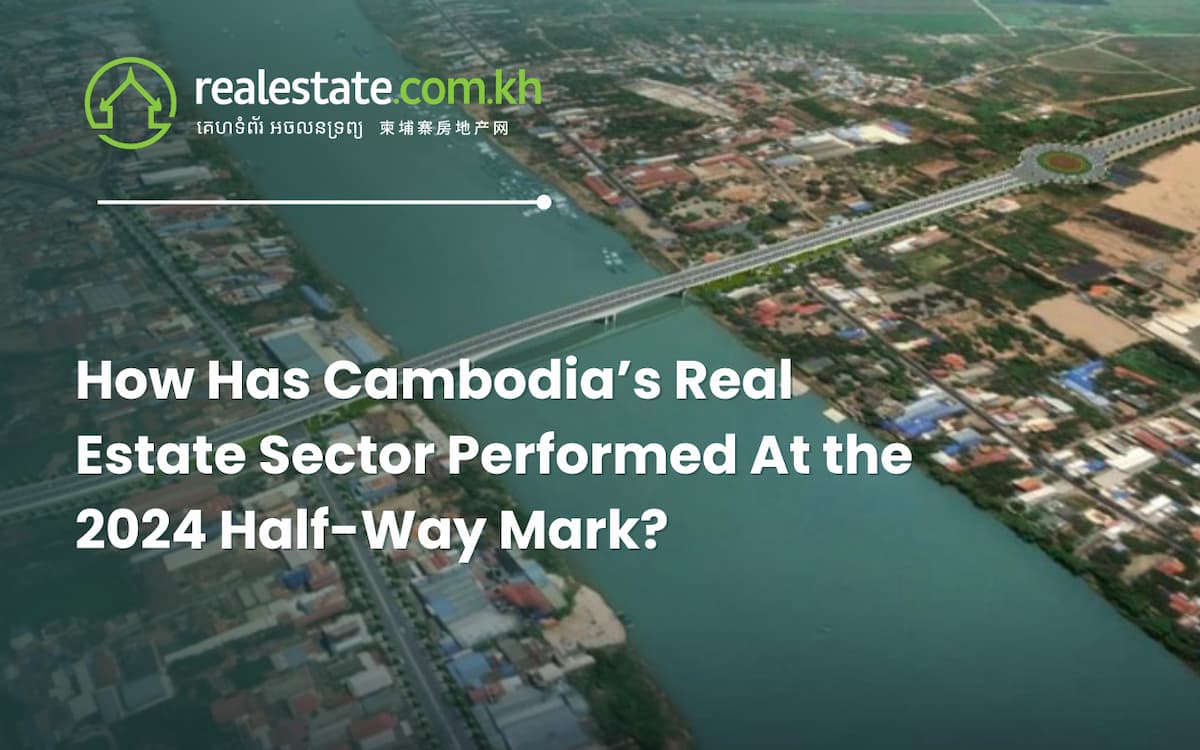It's a challenge to switch on the economic and investment news for Cambodia and filter through which projects will actually materalise. New airports though are coming - as many as six airport projects were explored for the period 2019 to 2024 to further promote the aviation sector, which in turn promotes tourism and national economic growth. The four new airports that are under development have a combined investment worth approximately USD $2.8 billion.
Nearly a quarter of Cambodia's 17 million inhabitants lived in urban areas by the end of 2022, but this number is set to grow to nearly 8 million people by 2030. Coupled with the government’s hopes that tourism will keep growing and surpass pre-pandemic levels over the coming years, it makes sense for the network of airports to be increased for greater international and domestic connectivity.
What Airports Are On The Rise In Cambodia
At the start of 2023, the fourth greenfield airport in the Kingdom was confirmed to go ahead on Koh Rong, adding to the Dara Sakor International Airport, Siem Reap-Angkor International Airport, and Techo International Airport, all of which are invested in by the private sector.
A recent development report indicated that as many as 13 airports were in conversation across the country, and there is a strong case that this is too many for a country the size of Cambodia. There are three current active and international airports serving domestic and international flights, which have all undergone some form of refurbishment and upgrades over recent years.
The sudden rush to interconnect the country locally and within the region has also seen simultaneous upgrades to deep sea ports, the addition of new tourism ports, and possibly new and expensive train links and highways - there is a frantic rush to attract investment into infrastructure.
Siem Reap Angkor International Airport
The new international airport in Siem Reap was confirmed in 2019, and construction has been underway at Soutr Nikom district, approximately 51 km southeast of Siem Reap and 40 km from UNESCO-listed Angkor Archaeological Park.
The airport is significantly larger than the current operational airport in Siem Reap and will cover 700ha with an estimated cost of USD $900 million.
The airport is invested in by Angkor International Airport Investment (Cambodia) Co., Ltd, an affiliate of China’s Yunnan Investment Holdings Ltd which holds the rights to a 55-year build-operate-transfer (BOT) model. The group confirmed at the start of 2023, that the airport would be open before the end of the year.
As a 4E-level airport, Siem Reap Angkor International Airport should be able to accommodate aircraft such as A340-300, A350-900, B777-200, B777-300ER, B747-300 and B747-400.
Techo Takhmao International Airport
The rapid expansion of urban areas in Cambodia, and especially in the case of Phnom Penh, meant there was nowhere for the current international airport to grow, so it makes sense that with increased travel demand - a new airport was possibly needed.
Although the new airport is exciting, one of the real benefits for all these years has been the quick and easy access to the existing airport in the capital for tourists, foreign residents and Cambodians.
The Techo Takhmao International Airport, located around 35 kilometres south of Phnom Penh, is a joint venture between the Overseas Cambodia Investment Corporation, the Cambodian government, and the SSCA - called the Cambodia Airport Investment Co.
By mid-2022, construction of the new international airport was one-third complete, and like the other airports under development, has fallen behind schedule with the pandemic being blamed. Current plans are for the construction to be completed by 2024, with the airport to be operational by 2025.
Changi Airport Group provided a boost of confidence to the ambitious plans for the airport - which will be the ninth largest in the world - and as a 4F class designated airport it would allow for larger aircraft to make use of the transport hub in the capital.
The project spans over 2,600 hectares, and according to the master plan, the airport will handle 13 million passengers a year in the first phase, 30 million passengers in the second phase by 2030, and up to 50 million passengers in 2050 in the third phase.
OCIC says the new airport is planned to contain hotels, a convention centre, office buildings, an ecological park as well as private housing, adding that it will be connected to the city by a motorway, and ultimately with an elevated rail line.
Koh Rong International Eco-Tourism Airport
Somewhat surprisingly, in early 2023, the news of Koh Rong International Eco-Tourism Airport was announced with the development expected to cost USD $300 million. The project will be led by Royal Group Koh Rong Development Company, and the Koh Rong International Eco-Tourism Airport is expected to take five years to complete.
The Cambodian islands remain a key tourist destination for local and international travellers. Even though “Eco-Tourism” appears in the new airport’s name - it won't dissuade critics of the plan and how the project will potentially impact the environment and ecosystem which will be keenly monitored.
Mao Havannal, the Minister in charge of the State Secretariat of Cambodian Civil Aviation confirmed that the development falls under the government-approved framework of a multi-purpose joint venture for Koh Rong city.
Initial plans are for the airport to be a 4C class international airport, meaning that the airport can accommodate larger aircraft for international long-haul flights. The master plan anticipates passenger growth reaching 275,314 per year in Phase 1 (a ten-year phase), followed by 265,929 passengers in Phase II, and a limit of 531,858 passengers per year after the completion of its final development.
Dara Sakor International Airport
The Dara Sakor International Airport has experienced several delays after being initially announced in 2016, and the latest estimate is that operations will start in mid-2023.
The airport is being constructed near the Dara Sakor resort, in Koh Kong’s Botum Sakor district under a similar agreement to the Koh Rong International Eco-Tourism Airport, but in this case, the Chinese-owned Union Development Group (UDG) are leading the project.
The airport is expected to be able to accommodate Code E aircraft (such as the Boeing 777 and Airbus A340), with 4 helicopter terminals, and capacity for 7 million passengers and 10,000 tons of air cargo per year.
The airport covers 4.5 hectares and has an expected development cost of USD $350 million (although there has been no recent update taking into account the delays.)
What Do These Airports Mean For The Construction And Real Estate Sector?
Prime Minister Hun Sen recently said the new Siem Reap International Airport will play a major role in increasing the country’s economy and tourism when it opens in late 2023. “This large-scale international airport will bring a boost to the economic development in our northern region, including the provinces of Siem Reap, Oddar Meanchey, Kampong Thom, and Preah Vihear,” he said.
It goes without saying that the construction and development of the airports lead to a number of associated projects such as improved infrastructure, additional retail, F&B, accommodation etc - not only on-site but in the surrounding areas.
This will increase demand for cargo facilities, hotels, guest houses and other forms of short-term accommodation, restaurants, cafes & bars, and the spillover from the construction of new improved transport links will see petrol/gas/EV charging stations, roadstop cafes and more.
Airports attract the need for industrial space and specialised cold storage facilities, warehouses, data centres, and mass food production facilities.
Cambodian international airports in 2023, serve 24 destinations and 11 countries which are not yet at the pre-pandemic level.
Once new airports come online, and new routes & destinations are added, with the support of well-placed advertising campaigns & additional quality tourist attractions, Cambodia could well be set for an unprecedented boon in tourism numbers and investment over the coming decade.




Comments